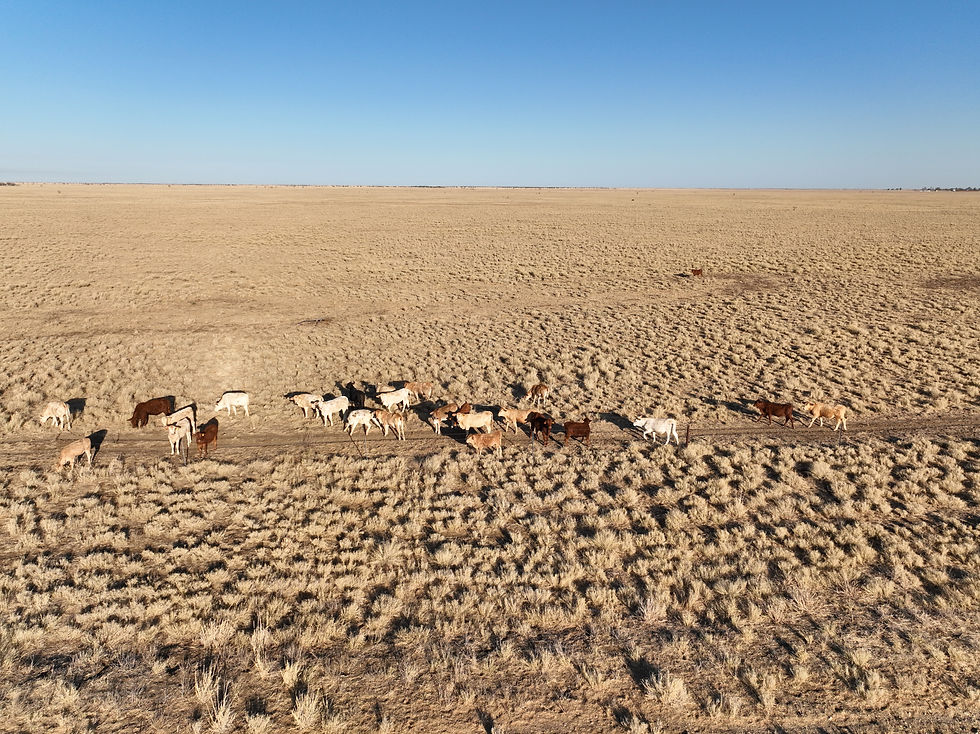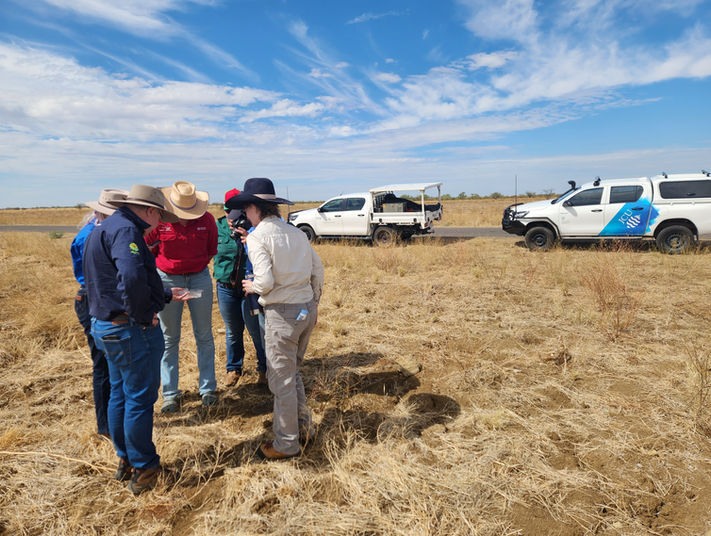
Northwest Queensland
Location
Widespread flooding in northwest Queensland in 2019 caused extensive damage to grazing lands, with devastating impacts on the grazing industry and local communities.
Five years following the floods, we assessed land and soil condition at 62 sites across Mitchell Grass Downs grazing lands to better understand factors influencing recovery and resilience.
Results suggest that land in good condition before flooding recovers more quickly and is more resilient to the impacts of extreme climate events (both flood and drought).
Key points
Post-2019 flood recovery of Mitchell Grass Downs grazing lands
The 2019 flood: scale and impact on grazing
The Mitchell Grass Downs is an expansive grassland region known for its drought-hardy grasses, minimal tree cover, rich biodiversity, and optimal pastoral conditions. But this landscape is threatened by overgrazing, weeds, and extreme climate events.
In 2019, unprecedented rains triggered broadscale flooding of up to 13 million hectares of the Flinders River catchment, in northwest Queensland. The floods, compounded by a severe wind chill event, devastated the grazing industry and local communities – resulting in the death of over 500,000 head of livestock, and causing extensive damage to fences and roads.
At the time of the flood, the region was in the midst of a six-year drought. The parched soils and pastures were vulnerable. When floodwaters arrived, they stripped away topsoil, soil seedbank and organic matter in some areas, severely degrading soil and pasture condition. In other areas, substantial amounts of silt smothered pastures and prolonged floodwater inundation contributed to the death of pasture plants.
To help inform how grazing land management can build resilience to extreme climate events, researchers have assessed how grazing lands in this region, including the Mitchell Grass Downs, have recovered or failed to recover after this major flood event.
Assessing grazing land recovery
Five years after the floods, JCU TropWATER partnered with the Southern Gulf Natural Resource Management Group to examine why some sites bounced back while others struggled.
Initial field surveys by the Queensland Department of Agriculture and Fisheries (now Department of Primary Industries) in 2019 and 2020 assessed post-flood soil and pasture condition. In 2024, our team revisited 62 of those sites to assess five-year recovery across the Mitchell Grass Downs.
Results: pasture condition shaped recovery
Our researchers found significant improvements in land condition at many sites that were heavily impacted by the 2019 flood. Strategic land management by graziers, coupled with recent summer rainfall, likely played a major role in driving this recovery.
The research found lands with grass tussock heights of about 20-30 cm at the time of the floods had the greatest rates of recovery, compared to more heavily grazed lands with tussocks reduced to 10 cm or less.
The study provides a snapshot of recovery trends, showing:
Poor condition sites improved, but only to moderate levels.
Moderate condition sites mostly held steady or improved slightly.
Good condition sites were more likely to improve to excellent condition.
The program did not examine the influence of specific land management practices, and more research is needed to understand these dynamics.
Future-proof grazing lands for a changing climate
The frequency and intensity of extreme events, like droughts and floods, is expected to rise as climate change impacts increase. The findings of this study suggest the importance of grazing land management that supports landscape recovery and resilience to extreme climate events.
While more research is needed, field observations suggest the following practices may contribute to improved outcomes:
Maintaining grass tussock heights of approximately 20-30cm, particularly during dry periods, may enhance post-flood recovery.
Adjusting stocking rates during drought to preserve land condition and prevent overgrazing.
Aligning production planning with seasonal forecasts and climate outlooks to reduce risks.
These insights provide a foundation for future research and targeted extension efforts. Upcoming projects will focus on supporting graziers to adopt and refine sustainable land management practices that build resilience, deliver environmental outcomes, and sustain productivity.
Project details
This project is led by Dr Jack Koci in partnership with Southern Gulf Natural Resource Management Group. This project is funded by the Tropical North Queensland Drought Resilience Adoption and Innovation Hub through the Australian Government’s Future Drought Fund. We acknowledge Trevor Hall and Jenny Milson for assisting with the 2024 survey, the Queensland Department of Primary Industries who commissioned the earlier surveys, and the landholders who enabled access on their properties.

Research support

Research leads











